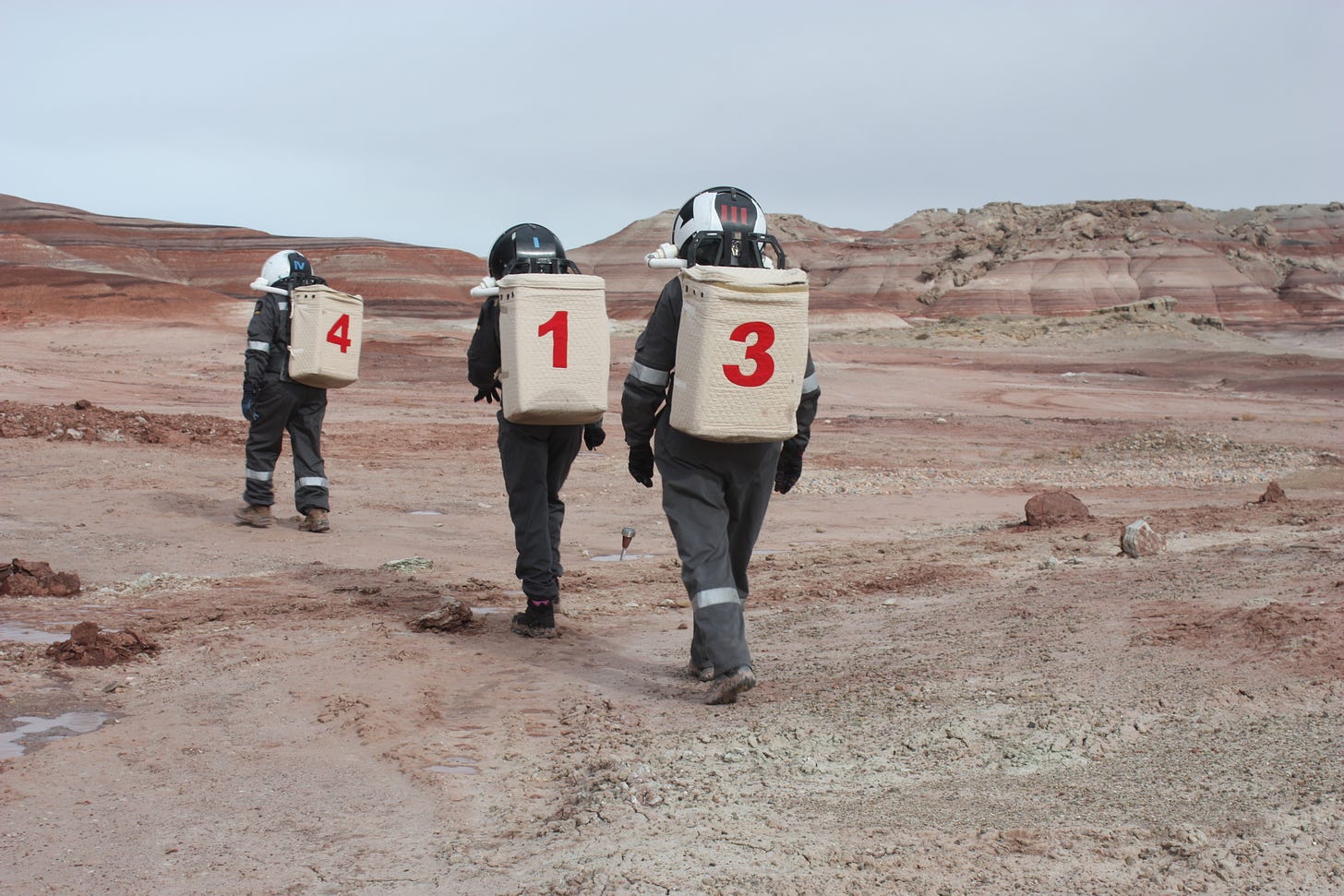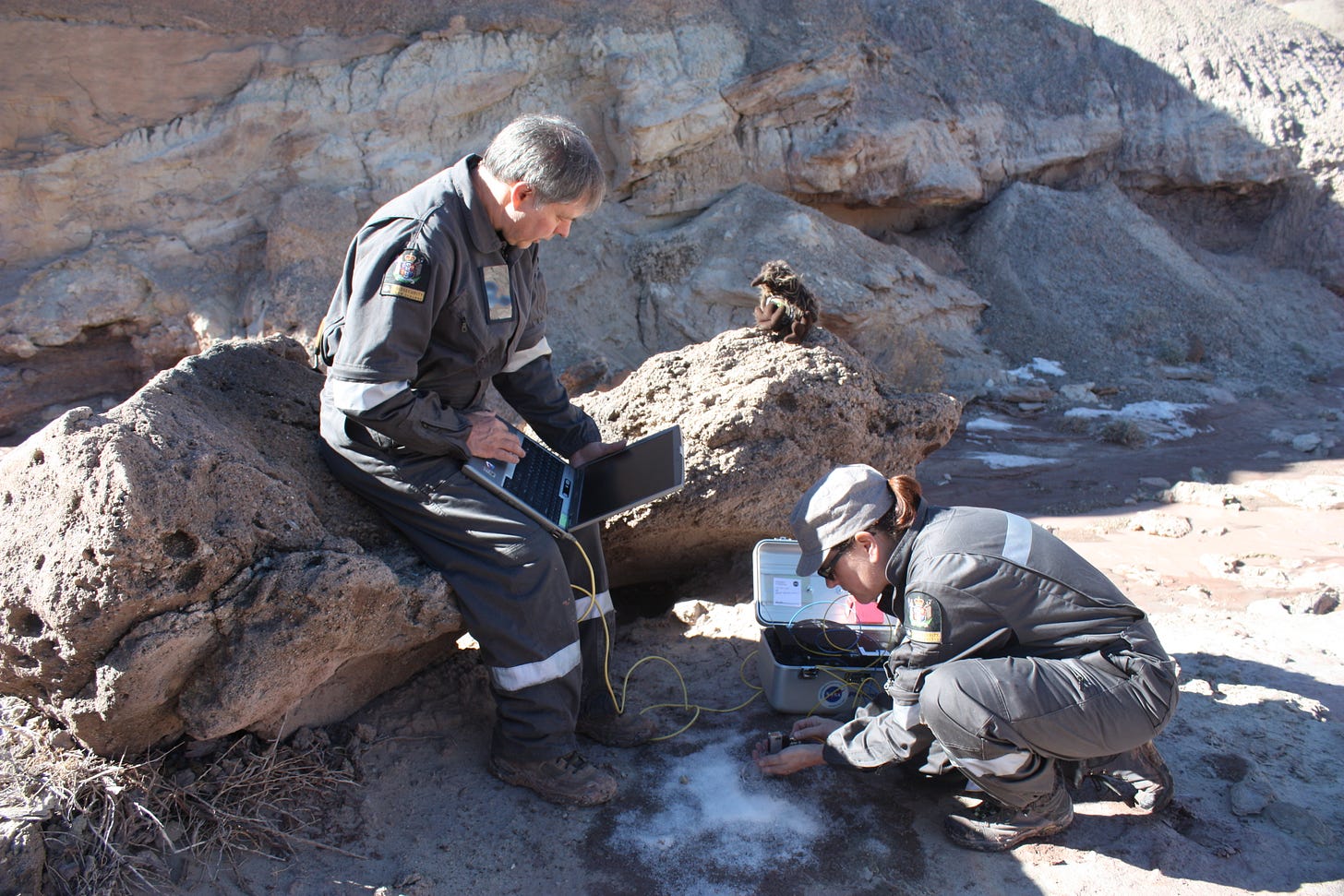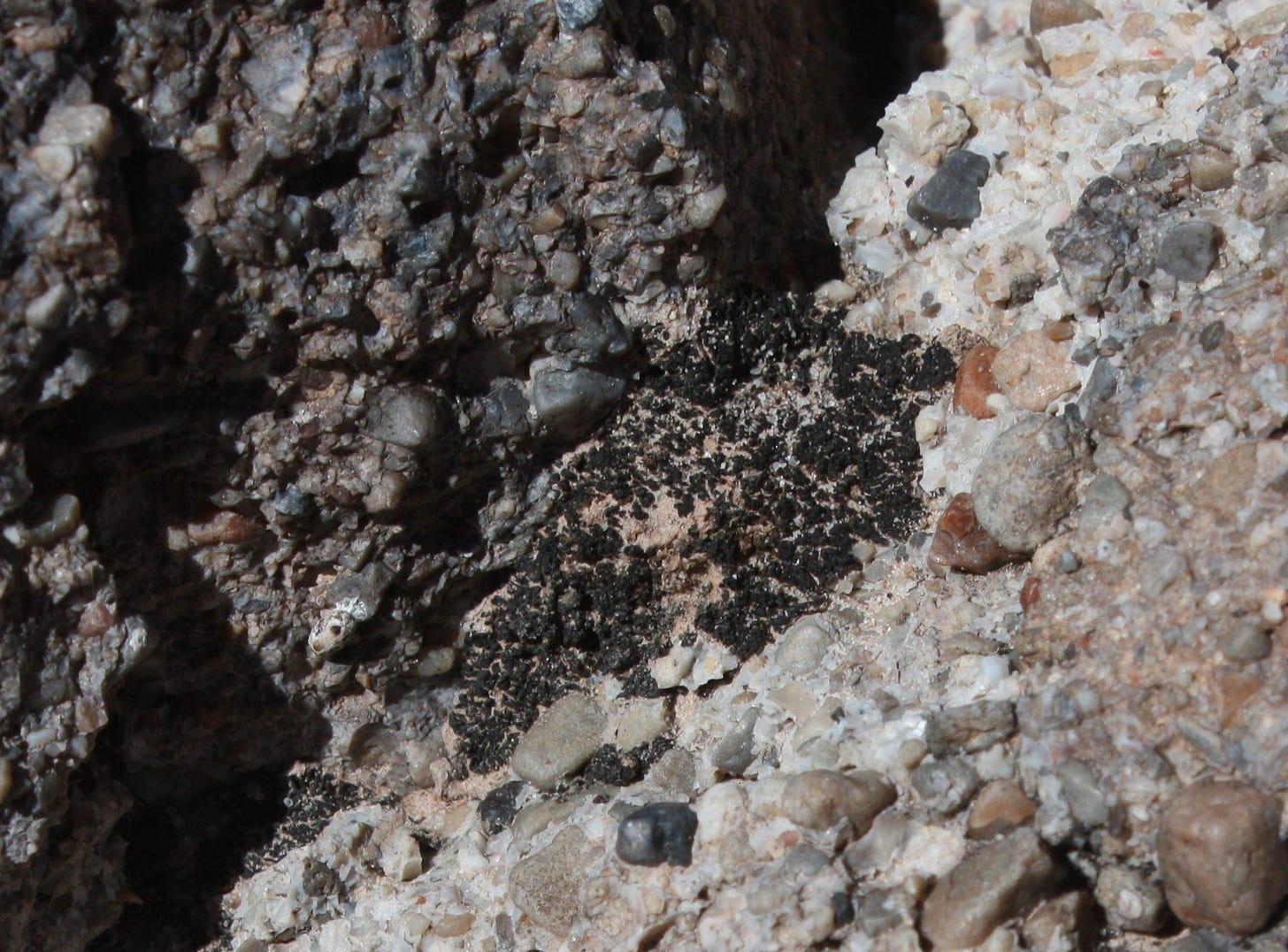This week, I don’t have an article ready, so I thought I’d share something I wrote many years ago, when I spent two weeks in Utah playing astronaut. Yes, you did read that correctly. In 2013, I went to the Mars Desert Research Station, in the Utah desert, to take part in a simulated Mars mission. It was two weeks in close quarters with four other people - living on freeze-dried meals, using the bare minimum of water and trying not to annoy each other too much.
The trip is on my mind, because NASA’s latest rover, Perseverance, landed successfully at the bottom of Jezero Crater on the 18th of February. One of its main goals is the search for evidence of whether Mars once supported life. And I’ve long been interested in the strange life forms that exist in the most extreme environments.
2nd February 2013
It’s been a consistent convention of science fiction writers that alien life forms look rather like us. Ninety years ago Edgar Rice Burrows’ green-skinned and four-armed Martians walked on two legs, saw through two eyes and spoke through a mouth situated below their nose. As our scientific knowledge increased, we might have expected a more diverse range of alien life but the demands of film and television meant that aliens were generally played by human actors - with large amounts of makeup and prosthetic ears. Many of these aliens were also mammalian, to judge by the distinctive anatomy of alien females on Star Trek at least.
As a result, most of us grew up with rather skewed expectations of what would define alien life.
In reality, we sometimes have a hard time recognising our fellow life forms on earth. As we travel around cities and suburbs, farms and wild places, we mostly remain oblivious of this fact. But when we go to some of earth’s more extreme environments – the deep ocean, the frozen poles or here in the Utah desert – the definition of “life” confounds our expectations.
The Utah desert looks like Mars partly because of the remarkable landforms and partly because it is so barren. Apart from a few plants on the edge of the washes this place appears devoid of life. When you put on your spacesuit and walk across the cold yet parched plain, it’s not hard to imagine that you and your crew are the only known life on the whole planet.
But if you know what to look for, there’s abundant life here in this most desolate place.
Today we went on a field trip to test the Raman spectrometer – a delicate laser instrument connected to some delicate software on a slightly more robust laptop. We visited a site with petrified wood and fossil shells, in order to test whether the Raman could tell the difference between rocks, fossil life and living things. It’s an important question, because we are yet to either visit Mars or bring any specimens back, so we need to understand the capabilities of our instruments on earth – before we launch them into space.
We found a great spot, with sandstone, mudstone, ice, petrified wood and some fossil shells that looked to me exactly like the kinds of things I’ve dug up at the beach, except that they actually date from the Jurassic era. So they are more than 165 million years old. The Raman behaved itself, which was a delight after the battle with the Rover on Tuesday, and we got readings from a good range of rocks and fossils. When it came to testing living things, there were various plants scattered around the streambed, but there were some far more cryptic life forms to be found as well.
We set the Raman up, and I proceeded to do what I always do, look around for plants. I spotted the prickly pear cactus and the tamarisks, but I was looking for other things. A slab of conglomerate rock, with multicoloured pebbles through it, had a strange black patch in a little crevice. It looked like just another bit of the rock, but it was alive – a tiny patch of lichen. Once we knew it was there, we suddenly saw lots of patches of lichen. And so we tested the Raman on it.
Lichen is one of the classic life forms of extreme environments. On barren and exposed mountain peaks the rocks are colourful with lichen communities. On the chilly rocks of Ross Island in Antarctica tiny splashes of yellow on the rock are just about as lush as it gets. On baking bare lava, lichens can be found making themselves at home. And there are plenty of lichens around the Mars Desert Research Station if you look closely.
There are other obscure forms of life in the desert here. At the base of a steep rocky slope, there was some strange mud with a somewhat bubbled surface. There’s lots of that around, and it is mostly caused by repeated freezing and thawing. But this was different. Touch it, and it doesn’t feel right. It just feels alive, squishy and slightly slimy, like dirt but held together by tiny threads. It’s called a cryptobiotic crust, and it’s a diverse community of different microbes that burst into life when there’s water then shrivels away as the water disappears. Most of us just walk by, or destructively trample over these amazing life forms without ever knowing they are there.
If we have such a hard time recognising life on earth, that raises a slightly disturbing question about the search for life on Mars. If a rover found evidence of Martian life, would we even recognise it? We know enough not to expect four-armed green humanoids, but do we have the technology – and the imagination – to find life, if it is there? It’s going to take a few days to analyse the results from the tests with the Raman, but when that happens, we will be a little closer to answering that question.
The post-script to this story, is that the Raman did, indeed, prove successful. There were many more tests, of course, but now, there is a Raman spectrometer on the Perseverance Rover, on Mars. I will be following the results that come back with interest.
Due to my current work commitments, I’ll be writing an original article for The Turnstone once a fortnight for the next few months. On alternate weeks, I will either share some of my older writing, or some links related to the previous week’s article. I’ve also got some exciting news. Look out for my new logo in the next few weeks!
Do you know someone who might enjoy The Turnstone? Please forward it to them.
Did you receive The Turnstone from a friend? You can subscribe and receive it directly every week.
Do you want to see more of The Turnstone? All of the stories can be found in the archive, here.
Have you found a factual error or typo? Let me know and I’ll correct it in the archive version.







